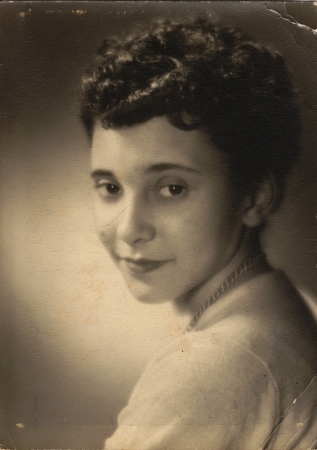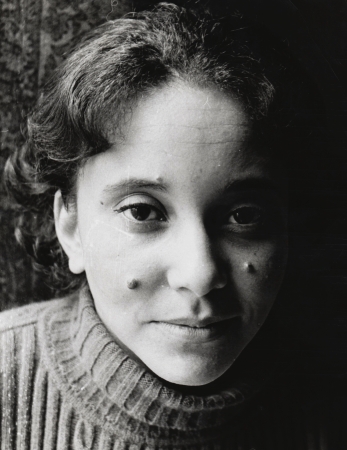The House of Dies Drear (23 page)

“Papa …” Thomas said.
“Shhh. Thomas, there is so much to do. Years!” Thomas told him what Mrs. Small had said.
“Yes, yes,” was all Mr. Small answered. Thomas couldn’t tell if his father had listened or not.
Mr. Pluto’s brown throw was lying on the floor by some books. Thomas went around, picked it up and carefully put it around his father’s shoulders.
“You caught yourself a cold,” he said softly. “You’d better take care.”
Mr. Small continued reading. Once he smiled vaguely at Thomas, not unkindly. But his eyes were full of the eager concern he had for the work ahead of him.
It was then Thomas saw Pesty sitting at the very top of the ladder, next to the shelves of bottles. She had a cloth in her hand; she smiled at Thomas and held out the cloth. Thomas placed a finger to his lips and shook his head. He held out his arms to her. Pesty came halfway down the ladder and Thomas lifted her the rest of the way. He went up the ladder and seated himself at the top. Again he held out his arms for Pesty. She climbed up and sat a few rungs below him.
“Papa’s going to work himself until he catches the flu,” he whispered in Pesty’s ear.
“If he gets sick,” she whispered back, “you’ll have to give him the medicine, like I do for Mr. Pluto.”
They sat for a long time then, without saying anything. Pesty was content to sit with Thomas, and Thomas by now was used to having her around.
Looking at the cavern from high up was different than seeing it down below. Suddenly Thomas saw the thick chain almost hidden by bright tapestries. He had noticed it the first time he and Mr. Small had entered the cavern. Now he could tell what was at the end of it. He pointed at it for Pesty. She nodded.
“It’s been up there forever,” she whispered.
High up, the chain was looped on a thick hook projected from the ceiling. Hanging from the end of the chain was a black trunk. It was quite a large trunk, which bulged with something that would one day burst its seams.
Thomas’ curiosity was aroused. But then he leaned back. Slowly it came to him that he didn’t care at all what was in the trunk. In the vastness of the cavern, one more item didn’t seem to matter.
Let it stay a mystery, he thought. As long as the chain and hook can hold it, just let it stay there.
He didn’t bother to look at it or to think about it again.
He and Pesty sat watching the still form of Mr. Small, almost hidden beneath Mr. Pluto’s throw. They would wait for as long as they had to. They would wait on the ladder by the bottles as long as it would take Mr. Small to remind himself of them and need them to help. And they didn’t mind the waiting, not this day nor the days to come. They had years.
A Biography of Virginia Hamilton
Virginia Hamilton (1934–2002) was the author of forty-one books for young readers and their older allies, including
M.C. Higgins, the Great
, which won the National Book Award, the Newbery Medal, and the Boston Globe-Horn Book Award, three of the most prestigious awards in youth literature. Hamilton’s many successful titles earned her numerous other awards, including the international Hans Christian Andersen Award, which honors authors who have made exceptional contributions to children’s literature, the Coretta Scott King Award, and a MacArthur Fellowship, or “Genius Award.”
Virginia Esther Hamilton was born in 1934 outside the college town of Yellow Springs, Ohio. She was the youngest of five children born to Kenneth James and Etta Belle Perry Hamilton. Her grandfather on her mother’s side, a man named Levi Perry, had been brought to the area as an infant probably through the Underground Railroad shortly before the Civil War. Hamilton grew up amid a large extended family in picturesque farmlands and forests. She loved her home and would end up spending much of her adult life in the area.
Hamilton excelled as a student and graduated at the top of her high school class, winning a full scholarship to Antioch College in Yellow Springs. Hamilton transferred to Ohio State University in nearby Columbus, Ohio, in order to study literature and creative writing. In 1958, she moved to New York City in hopes of publishing her fiction. During her early years in New York, she supported herself with jobs as an accountant, a museum receptionist, and even a nightclub singer. She took additional writing courses at the New School for Social Research and continued to meet other writers, including the poet Arnold Adoff, whom she married in 1960. The couple had two children, daughter Leigh in 1963 and son Jaime in 1967. In 1969, the family moved to Yellow Springs and built a new home on the old Perry-Hamilton farm. Here, Virginia and Arnold were ableto devote more time to writing books.
Hamilton’s first published novel,
Zeely
, was published in 1967.
Zeely
was an instant success,winning a Nancy Bloch Award and earning recognition as an American Library Association Notable Children’s Book. After returning to Yellow Springs with her young family, Hamilton began to write and publish a book nearly every year. Though most of her writing targeted young adults or children, she experimented in a wide range of styles and genres. Her second book,
The House of Dies Drear
(1968), is a haunting mystery that won the Edgar Allan Poe Award.
The Planet of Junior Brown
(1971) and
Sweet Whispers, Brother Rush
(1982) rely on elements of fantasy and science fiction. Many of her titles focus on the importance of family, including
M.C. Higgins, the Great
(1974) and
Cousins
(1990). Much of Hamilton’s work explores African American history, such as herfictionalized account
Anthony Burns: The Defeat and Triumph of a Fugitive Slave
(1988).
Hamilton passed away in 2002 after a long battle with breast cancer. She is survived by her husband Arnold Adoff and their two children.
For further information, please visit Hamilton’s updated and comprehensive website:
www.virginiahamilton.com

A twelve-year-old Hamilton in 1948, when she was in the seventh grade.

Hamilton at a New York City club while she was a student at Antioch College in the mid-1950s. She often performed as a folk and jazz vocalist in clubs and larger venues.

Hamilton with her brothers, Buster and Bill, and sisters, Barbara and Nina, around 1954.


Hamilton’s head shots. The first was taken while she was a teenager in the early 1950s. The second was taken in her New York City apartment in the late 1960s, before she and Adoff built their house in Yellow Springs.

Hamilton outside of her first New York City apartment, which she shared with Adoff, around 1960. The couplemoved to a below-street-level single room on Jane Street and, Adoff says, “thought we were such hot stuff, living in the Village and taking our places in that wonderful and long line of writers banging their heads against the wall…but in style.”

Adoff and Hamilton in Gibraltar in 1960, after a hard day of shopping and climbing the rock seen in the photo. As Adoff recalls, “This was the first time I convinced Virginia to sell everything but the books and leave America forever. It was also our delayed honeymoon. We made our way from Bremen to Paris to Málaga to a residency in Torremolinos, Spain, where we worked on our manuscripts and took side trips. This was one of them.”
